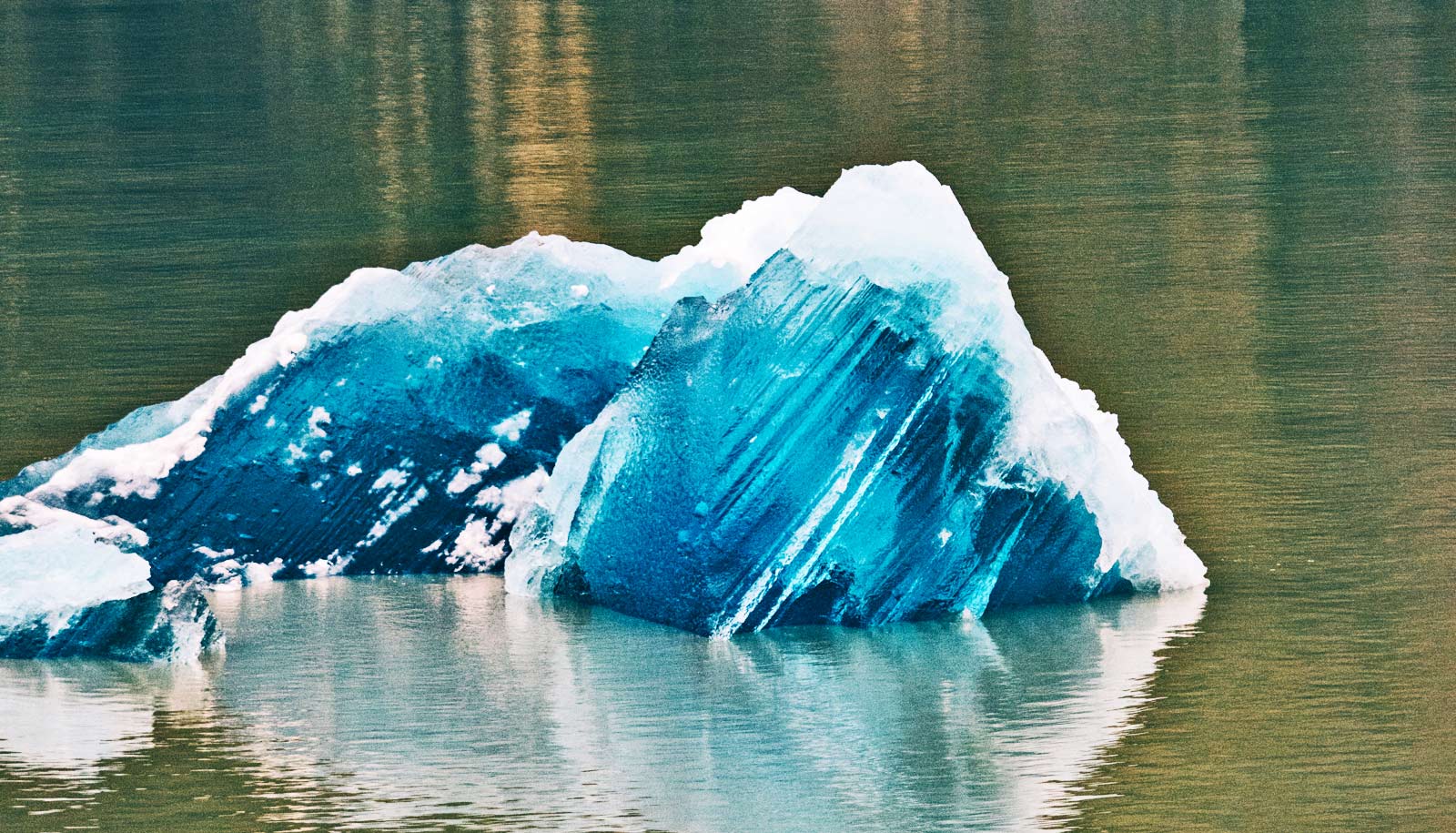
Melting of the Greenland ice sheet related to the Foehn and katabatic winds has gone up by more than 10% in the past 20 years while the impact of the winds on the Antarctic ice sheet has decreased by 32%. (Credit: Getty Images )
Ice melt is speeding up or slowing down depending on location
Melting of surface ice in Greenland has been speeding up but is doing the exact opposite in Antarctica, a new study shows.
Surface ice in Greenland has been melting at an increasing rate in recent decades, while the trend in Antarctica has moved in the opposite direction, a new study shows.
Researchers studied the role of Foehn and katabatic winds , downslope gusts that bring warm, dry air into contact with the tops of glaciers.
They say that melting of the Greenland ice sheet related to these winds has gone up by more than 10% in the past 20 years; the impact of the winds on the Antarctic ice sheet has decreased by 32%.
“We used regional climate model simulations to study ice sheets in Greenland and Antarctica, and the results showed that downslope winds are responsible for a significant amount of surface melt of the ice sheets in both regions,” says Charlie Zender, professor of Earth system science at the University of California, Irvine and coauthor of the study in the journal Geophysical Research Letters . “Surface melt leads to runoff and ice shelf hydrofracture that increase freshwater flow to oceans—causing sea level rise.”
While the impact of the winds is substantial, he says, the distinct behaviors of global warming in the Northern and Southern hemispheres are causing contrasting outcomes in the regions.
In Greenland, wind-driven surface melt is compounded by the massive island “becoming so warm that sunlight alone (without wind) is enough to melt it,” Zender says. The 10% growth in wind-driven melt combined with warmer surface air temperatures has resulted in a 34% increase in total surface ice melt.
Zender attributes this outcome in part to the influence of global warming on the North Atlantic Oscillation , an index of sea level pressure difference. The shifting of NAO to a positive phase has led to below-normal pressure across high latitudes, ushering warm air over Greenland and other Arctic areas.
The researchers found that, in contrast with Greenland, total Antarctic surface melt has decreased by about 15% since 2000. The bad news is that this reduction is largely due to 32% less downslope wind-generated melt on the Antarctic Peninsula where two vulnerable ice shelves have already collapsed.
Zender says it’s fortunate that the Antarctic stratospheric ozone hole discovered in the 1980s continues to recover, which temporarily helps to insulate the surface from further melt.
“The ice sheets in Greenland and Antarctica keep over 200 feet of water out of the ocean, and their melt has raised global sea level by about three-quarters of an inch since 1992,” says Zender, who holds a joint appointment in the computer science department.
“Although Greenland has been the No. 1 driver of sea level rise in recent decades, Antarctica is close behind and catching up and will eventually dominate sea level rise. So it’s important to monitor and model melt as both ice sheets deteriorate, including the ways climate change alters the relationship between wind and ice.”
He says he hopes that the research on the role of Foehn and katabatic winds in polar regions will help the climate science community strengthen the physical fidelity of Earth system models.
Additional coauthors are from UC Irvine and Utrecht University in the Netherlands.
The US Department of Energy, the National Science Foundation, and the Netherlands Organization for Scientific Research supported the work.
Source: UC Irvine
The post Ice melt is speeding up or slowing down depending on location appeared first on Futurity .
Share this article:
This article uses material from the Futurity article, and is licenced under a CC BY-SA 4.0 International License. Images, videos and audio are available under their respective licenses.
Related Articles:
Oceans could rise more than a foot by 2100
Sept. 24, 2020 • futurityMelting ice sheets could wreak havoc by 2100
Feb. 6, 2019 • futurityLinks/images:
- https://www.futurity.org/dyatlov-pass-incident-avalanche-2510132-2/
- https://doi.org/10.1029/2023GL102828
- https://www.futurity.org/undersea-channels-melt-ice-shelf-bottom/
- https://www.futurity.org/extratropical-cyclones-storm-surges-1681072/
- https://www.futurity.org/greenland-snowline-ice-sheet-2032922-2/
- https://www.futurity.org/blood-falls-antarctica-2941942-2/
- https://news.uci.edu/2023/10/16/ice-sheet-surface-melt-is-accelerating-in-greenland-and-slowing-in-antarctica/
- https://www.futurity.org/surface-ice-melt-antarctica-greenland-2987162/
- https://www.futurity.org


